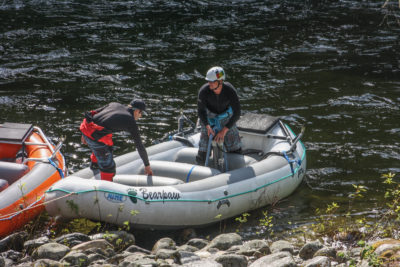
by Jason Shreder | Mar 23, 2018 | Uncategorized
Okay. So you are heading to the legendary Lochsa River. It’s time to get fired up.
The Lochsa is a designated Wild and Scenic river in north central Idaho. It’s a free-flowing (undammed) river, and in the early spring offers some of the best whitewater in the world. The river is cold, and a typical spring day on the Lochsa presents a mixture of rain, sleet, snow, and maybe a spot of sun if you’re lucky. With these thoughts swirling through your head like foam in an eddy, it’s essential that you be prepared for the adventure. We are here to help.
Before the Trip
Gas. The Lochsa is located in the middle of nowhere. There is no gas between the Lochsa Lodge and Kooskia, ID. Fill up your gas tank in Lolo, MT or Kooskia, ID.
Food. If you plan on camping or running the river, you have to do your grocery shopping before you arrive in Lowell, ID. It’s a great idea to bring some pre- and post-trip snacks. There is also a great café in Lowell called Ryan’s Wilderness Inn.
Beer. If you think you have brought enough, double it. You can always bring surplus back home. Don’t short -change yourself here.
Yourself. You need to be a proactive self-rescuer and a willing paddler on the Lochsa River.
Camping comforts. If you’re spending the night in the Lochsa corridor (and we strongly suggest you do!), don’t forget the creature comforts you need to deck out your campsite: firewood, coffee, French press, camp chairs, pop-up tent/tarp, yard games (like corn hole or horseshoes), rain gear, and warm, dry layers.
During the Trip
Gear. Bring Capilene, merino wool, or polypro to wear underneath your wetsuit. Make sure your layers aren’t too bulky, as thick, bunched-up material will not be comfortable or keep you as warm under your wetsuit.
Camera/Go Pro. If you want Go Pro footage, bring a mount for our helmets. And you’ll want to make sure your selfie game is strong.
Snacks. It’s not a matter of if, but when.
After the Trip
Warm/Dry Clothes. There is nothing more comfortable than being warm and cozy after being on the river all day. Add a nice warm hat to your post-river kit, as well.
Extra Cash. When you’re in the middle of nowhere, cash is king. Paper bills can be used for a trade, tip, or gambling at river camp yard games.
Water/Beer. Bask in the glory of the Lochsa River: make sure you drink some water before having a beer!
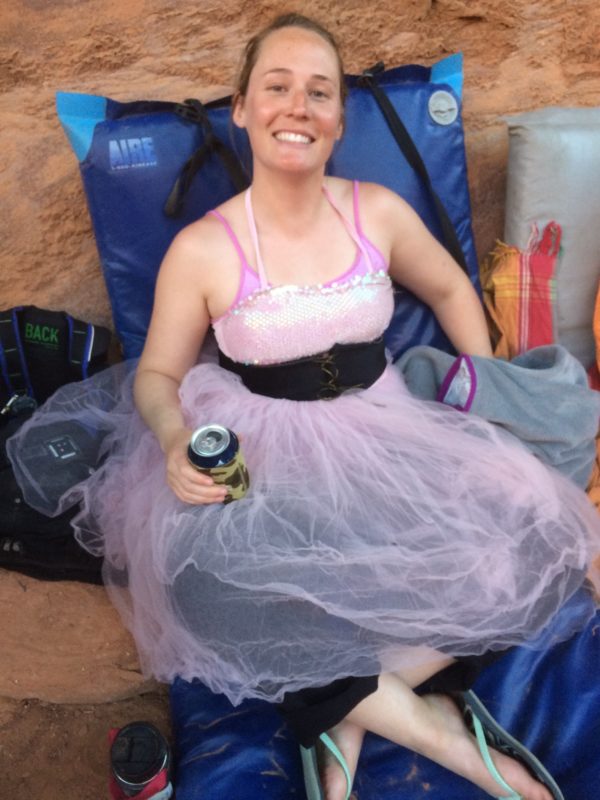
by Chandra Brown | Feb 14, 2018 | Uncategorized
RIVER LOVE
What do premature wrinkles, rancid polypro, sandy kisses, and rock-solid communication have in common?
Human relationships are hard. But for the paddling partner who’s also my special human, it must be extra tough.
When I get scared, I get grumpy. If plans change at the last minute, as they often do with boating, I get grumpy. When I get hungry, I get grumpy. (“You’re telling me you didn’t bring any snacks?”)
I don’t like it when my layers are still wet from the day before. And when I get cold, my partner is the first one to hear about it. (“Can I please borrow your pogies?”) Although I can feign toughness with the best of river guides, when my special human is around, I am decidedly less stout.
There are a lot of challenges:
Sometimes my special human-slash-paddling partner gets his lefts and rights confused, which is clearly a significant communication deficit when we are running whitewater together.
One time, he forgot his sopping wet dry suit in the rooftop box on his car for a month. That’s disgusting and I told him so, but I have admittedly committed similar offenses.
Another time the roof rack fell off of my car on an interstate at night, going 70 miles per hour, with his brand new playboat attached. Significant cosmetic damage was sustained to both already-battered vehicle and sparkling new kayak. I was visibly shaken, and he had the compassion to wait a day before inspecting the extent of the injuries to his boat.
On my first time down one difficult run, I didn’t make a move and slid backward through a blind slot between giant boulders. I had no idea what was at the base of the drop and I was terrified. I yelled his name as my boat fell over the lip and I landed in the pool beneath it, unscathed. He was there, waiting, his eyes as big as plates. We had both hated the way his name sounded as I yelled.
Sometimes he wants to paddle things that are beyond my skill or comfort level, which means I get left behind or I am unhappily demoted to photographer. This, above all the other things, is the biggest challenge for me to accept and overcome.
At a springtime whitewater festival near our home, I asked him to show me down a section of whitewater that was definitely a step up, but for which I felt ready. He said he didn’t think it was a good idea, and I was, consequently, furious. The next day, as I spent the morning ruminating on his choice to disregard my wishes, he secretly ran that section multiple times, seeking out the smoothest, most straightforward lines. After his full day of competition that afternoon, he showed me down the run. His lines were excellent; I barely got my face wet. My heart swelled.
At that same festival, before his own race, he had stayed and watched as I competed in a slalom race for people who aren’t ready or willing to run gates in hard whitewater. He cheered me on. I took third place and was uncommonly proud.
It’s nice to celebrate the victories together and to encourage one another when things go wrong; to cuddle in the tent when we’re cold and wet; or to remind each other to re-up the sunscreen when our noses start to get pink. There’s no substitute for the comfort of my special human’s hand on my shoulder when we are scouting a big rapid. And quesadillas for dinner, together, after we have worked or played all day on the river, taste better than any fancy five-star meal in the city.
There are few experiences that couples share that are as potentially transformative and instructive as running (or not running) whitewater together. Navigating the swirling emotions and physical challenges inherent to the sport will put any relationship to a series of unique tests. The trust that should exist between paddling partners is tremendous; factor in our individual insecurities, fears, expectations, and the unjust pressure we place on our special humans, and a powerful maelstrom emerges.
There’s also the beautiful, simple connection that comes from running rivers with our loved ones. We see each other at our strongest and at our most vulnerable, each of us dancing with a force so much larger than ourselves.
The river is quick to put us in our places and remind us that the petty things don’t matter as much as we often think they do; it moves with the grace I hope to emulate within my relationships.
A love born on the river is a special thing indeed. Over the years, many inspiring, intoxicating river people have flowed into and through my life, and for the most part, the love we’ve shared on and for the river hasn’t waned, but rather simply changed: morphed and meandered, as the river does with the passage of time. Some of us marry and raise families, others remain married to the river, or to memories, or to a fluid and dynamic future free of attachment or obligation.
Just as the river itself cannot be controlled, I wouldn’t dare try to tame or subdue the singular spirit of river-borne love. For all its challenges, I simply wouldn’t have it any other way.
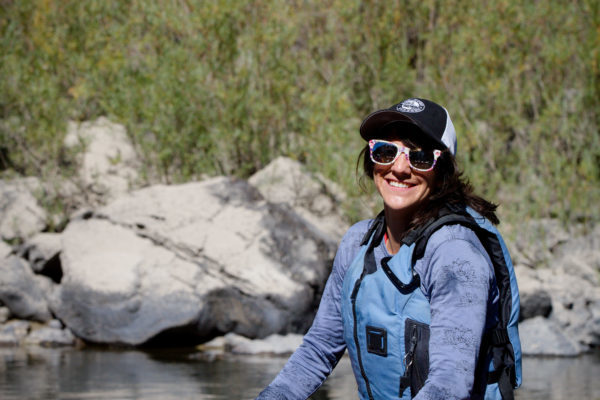
by Chandra Brown | Jan 10, 2018 | Uncategorized
Ladies, let’s talk about peeing in the woods. More specifically, let’s talk about peeing on the river. Or off the back of a raft. Our guy friends have it easy; as women, we have to put a little more thought into our river adventures.
NATURE’S CALL
When nature calls on the river, remember this timeless adage: “Dilution is the solution to pollution.” With few exceptions, most visitors to Western river corridors are encouraged to pee directly into the river. If there are no bushes or bends to protect your modesty, try to “face your danger:” squat facing the crowd to avoid mooning any unsuspecting onlookers. Resist the strange temptation to wade into the water and pee through your shorts, as this practice will result in an odor that won’t earn you many friends on a multi-day river trip. On the rare occasion where your guide can’t or won’t pull the boat over to shore, you might be compelled to pee of the side of the raft. Just ask your crew to avert their eyes, dangle your rear end off the tube, and hold on to the rope that runs around the perimeter of the boat. And if you’re serious about your river recreation, you might consider investing in a SheWee, otherwise known as a Lady J.
Always clarify your outfitter’s policy on managing solid waste. River guides would much rather explain (multiple times, if necessary) their #2 system than have you guess and botch the job.
THE MONTHLY VISITOR
When your menses coincide with your river trip, it feels best to be completely self-sufficient. Put some tampons inside a little Ziploc bag. Tuck another Ziploc bag inside the tampon bag. The inner bag is for your waste; the outer bag is to keep it all dry and contained. Put the whole package in a little dry bag or a pocket in your lifejacket. Keep it clean within the well-sealed outer Ziploc, and properly dispose of the inner Ziploc (with used tampons, applicators, and plastic wrap) when you get back to the outpost or to camp that night.
LOW BLOOD SUGAR
You need snacks. And plenty of them. Don’t let your blood sugar plummet. We burn a lot of calories on the water, and you need to regulate your blood sugar. Don’t let hanger interfere with your fun.
COLD FINGERS (and toes and noses and…)
Ladies often get colder than our male counterparts. Plan ahead, and bring cozy clothes for on and off the river. Synthetic fabrics (like fleece) and wool are best, as they dry quickly.
LOOKING GOOD
The river brings out our natural beauty, so there’s no need to apply makeup before you go rafting! Mascara will run, curls will fall out, straightened hair will get curly, and we all end up looking like drowned rats. It’s best not to look like a drowned rat with lines of melted mascara streaming down its face.
MUSCLES
Never let any dude tell you you’re not strong enough to (a) paddle up front, (b) pull yourself back in the raft, or (c) pull his ass back in after he’s tumbled overboard. Girls are often better paddlers than guys because they (in general) take instruction better and are more responsive to paddle commands. They often have better coordination and flexibility, which are huge assets in a paddler. Be aggressive when you paddle, flash your gorgeous smile for the camera, and go crush some waves with the best of ‘em!

by Jason Shreder | Jun 28, 2017 | Uncategorized
All kids should go rafting. It’s not only a great way to “unplug” from the daily consumption of electronic devices that we are all so accustomed to but it’s also a great way to explore the outdoors and have fun. Here is some advice for your next adventure on the river.
Pick the right river
A river company will help you make this decision based on 2 important factors: Age/Experience. Short is sweet for many young kids. If it’s your first time rafting, it’s crucial that your first experience is a good one. This sets the foundation for the success of future trips.
Take Risk
The river can bring out the best in all of us. Taking kids out of their comfort zone will allow them to discover new things about themselves and will give them confidence on and off the water. Your river guide will also give you sound advice and approval before your kids decide to jump off of a rock or swim a rapid. Let them rip!
Food/Water
Most guides are well prepared and pack extra snacks and water in their day bags. However, don’t rely on it. When kids are playing hard, they get hungry and thirsty. Bring some snacks such as trail mix, bars, chocolate, and water to keep them from crashing.
Extra Clothes
Many young kids are all skin and bones. Bring some extra synthetic clothing for them including a windbreaker in case they get cold after swimming in the river. You would be surprised how often we offer kids a fleece sweatshirt or hat when it’s 90 degrees out..
Responsible Parenting
A guide prerequisite is being a people person. Many of us have kids and are childlike. We like to have fun. We love kids. However, we are not babysitters. If your kids play hard enough, they will probably be too tired to argue with you anyways.
If you could do a snapshot of a kids attitude and behavior before and after a raft trip, it’s night and day. Post trip, kids reminisce about swimming rapids, paddling, jumping off rocks, playing games, and water fights. Get kids out on the water!
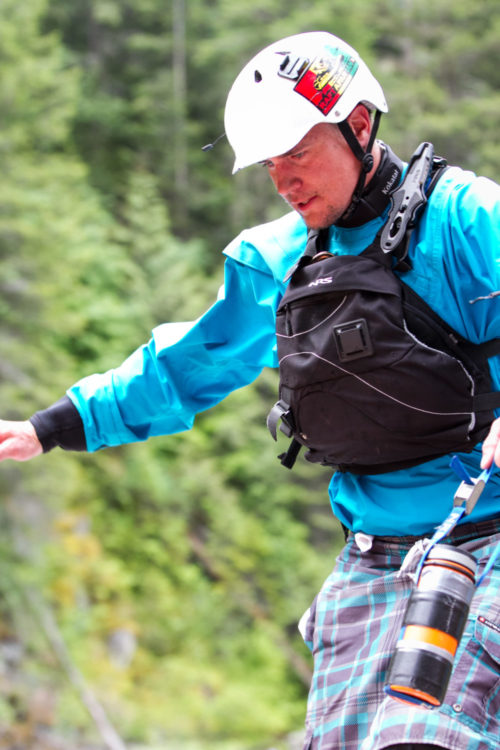
by Matt McGrath | May 30, 2017 | Uncategorized
It’s still dark when I open the rain fly. Six thirty. I swear I just walked away from the hot fire and cold drinks to pass out happily by the rushing river.
Quietly, we round up the crew and head downriver. We have two hours to get everything in place before the guests show up. The team breaks off into individual tasks, some fill and rig rafts while others count helmets and life vests. It’s always a guessing game sitting in Lochsa country. No cell service. No way to change the plan.
Coffee is consumed rapidly in between stacking rafts higher than a bus or piling paddles into the trailer. What looks like chaos to the few guests that show up early to watch “guide TV” all flows smoothly together as the rest of the cars start to show up. The essential gear is handed out and the bad jokes start to roll. You can feel the excitement and anxiety pouring off the paddlers. Many have never been whitewater rafting before. I play the role of comedian, teacher and, of course, guide.
The bus ride is filled with questions and stories of river trips past. The boat ramp is a flurry of work as the rafts get shoved in the water and pumped full. The PFDs are snugged tight and the helmet cams are rolling. The work’s not done for the day yet but for the next few hours everyone that worked hard all morning gets to enjoy the thing that brought us all together. The river.
The miles flow by quickly. A hot lunch is much needed on cold water trips. We prep and cook as guests lounge in the sun or crowd around the heater in the rain, reliving the trip this morning. Service with a smile, and usually a bad joke or two. The dishes washed and ready for the next day, we load up for the final 10 miles of river.
The take out is the same flurry in reverse: restack the rafts, collect the helmets and vests, and load back into the bus. While the guests revel in the glory of a day on the mighty Lochsa, the guides get to work. Gotta wash and hang dry all the gear and get it sized and put back in place for the next day.
The rafts deflated and the sun hanging low in the sky, we head back upriver to our fire and cold beverages. Six thirty is gonna come quick tomorrow and I couldn’t be happier about it.
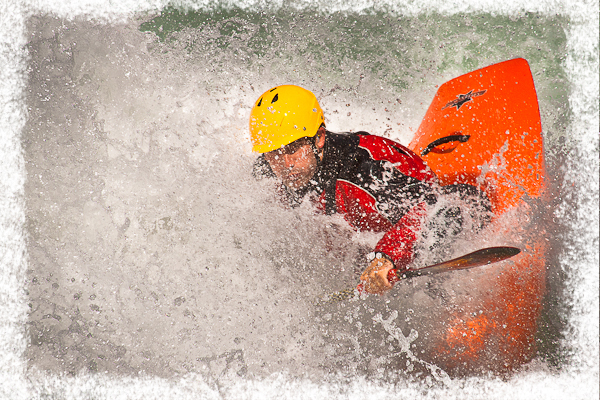
by Jason Shreder | Mar 8, 2017 | Uncategorized
Living in Montana and other northern states can be difficult in the winter months when temps aren’t exactly ideal for kayaking. Here are some tips on how to dress for success while kayaking in winter conditions, from a kayaker who always finds herself shivering!
DRYSUIT
In my opinion, a drysuit is one of the most important pieces of safety gear a kayaker can own. Not only does a drysuit extend your paddling season by several months – or in some places make it possible to paddle year-round – but it can also save your life in the case of an unexpected swim in 40 degree water. If a drysuit is out of your price range, dry bibs and a dry top used together can be a good substitute. I recommend Kokatat drysuits and drytops, as I have always found their gear to be extremely dry, reliable, breathable, and comfortable.
UNION SUIT / FLEECE ONESIE
Though this one-piece layer is not entirely necessary, I do find it to be the most comfortable way to layer for warmth underneath a drysuit. You don’t have to deal with tucking shirts into pants, shirts bunching up to your chest, and most importantly the chance of you getting a wedgie is diminished quite a bit. NRS, Immersion Research, and Kokatat all make great union suits.
*Pro tip for women! Make sure you buy a union suit with a butt flap if your drysuit has a drop seat!
ADDITIONAL FLEECE/SYNTHETIC/WOOL LAYERS ON TOP (depending on temps)
I am a naturally cold person, so I tend to wear more layers than most other people I see on the water. If I am paddling in the winter when it is below 35 degrees, I generally attempt to wear as many layers as can comfortably fit underneath my drysuit. This usually works out to be one silkweight layer for wicking sweat, one warmer long underwear layer (Patagonia’s capilene 4 works great!), one thin fleece (Patagonia’s R1 is my favorite), along with a union suit.
ADDITIONAL LONG UNDERWEAR ON THE BOTTOM
One lighter long underwear bottom worn underneath a union suit is usually all that is needed, since your legs are protected from the elements by your kayak.
THICK FLEECE/WOOL SOCKS
Acorn fleece socks are the only socks I have found that keep my toes warm inside my drysuit during the winter.
NEOPRENE MITTENS
Pogies work great when river running in fall weather. But once the thermometer drops below 35, or if I am playboating in cold water, I find that mittens are the only way to keep my hands toasty warm. The NRS Toaster Mitts are my mittens of choice. They even have a handy snot-wiper on the thumb!
NEOPRENE SKULL CAP
The best protection against ice cream headaches!
OVER-THE-DRYSUIT NEOPRENE SOCKS
I only added these to my gear collection this past season, and I am so glad that I did. By keeping dirt, rocks, and sand away from your drysuit socks, they will greatly increase the lifespan of your drysuit and help keep it 100% dry for much longer.
BOOTIES WITH GOOD TREAD
Falling on your butt is sometimes inevitable when walking to the put-in over icy trails, however, a bruised tailbone can be mitigated by buying booties with good tread! I recently purchased a pair of Astral Brewers and am super happy with how sticky the soles are on slick surfaces.
YAK TRAXS
These are not always necessary, but can definitely come in handy when hiking over icy portages.
EAR PLUGS
A must-have item for playboating at all times of the year! Swimmer’s ear can be extremely painful and can take you off the water for weeks at a time if it isn’t treated properly. Mack’s waterproof silicone earplugs can be bought at most drug stores and can be reused several times. They even come in a handy case that can easily fit in the pocket of your PFD.






